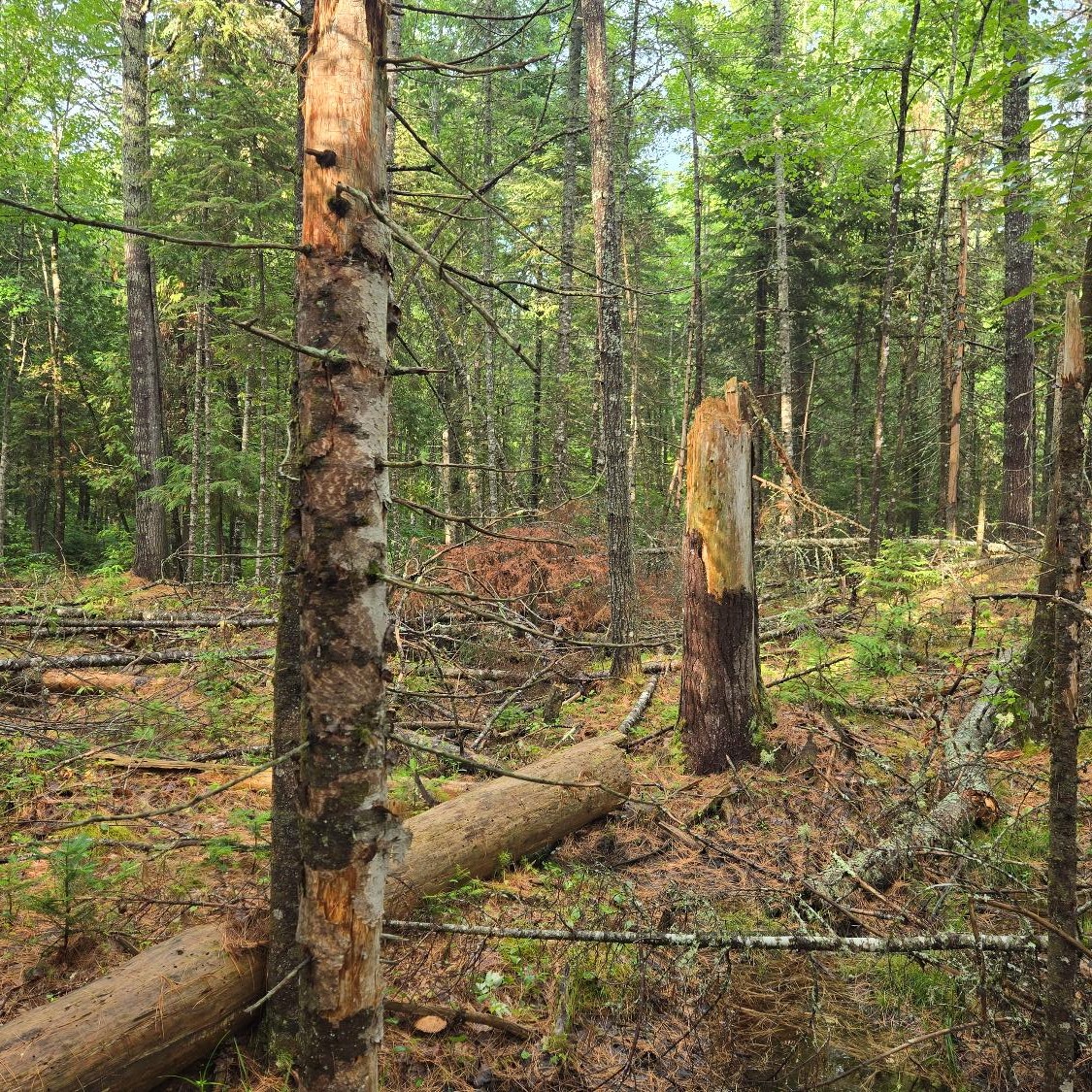| Species | In woods | In lumber | In paper/pulp |
|---|---|---|---|
| Sugar maple | 10 | 13 | 5 |
| Northern red oak | 10 | 13 | 5 |
| Black ash | 11 | 13 | 5 |
| Eastern white pine | 19 | 35 | 5 |
| Spruce/fir | 20 | 35 | 5 |

When trees are harvested, the carbon stored in them often transfer to harvested wood products. Carbon continues to be stored in harvested wood, but the length of time that carbon is stored varies depending on a number of conditions, including the product in which the wood is used. For example, wood used in construction material will store carbon for a longer time compared to wood used in pulp or paper products.
On the other hand, when trees die in the forest, they continue to store carbon, but slowly decay and release carbon back to the atmosphere. The rate of decay depends on a number of factors, including tree species, local conditions where it’s decaying (e.g., temperature and precipitation), and the size of the tree.
Some forest management plans include maintaining a healthy population of dead wood in the forest, which can provide habitat for wildlife and biodiversity. We also need wood products as a society. In short, carbon can be stored in dead trees and in harvested wood in varying amounts.
In this post, I compare the half-lives of carbon stored in (1) harvested wood products versus (2) dead wood in the forest. The half-life is the time it takes for half of the biomass or carbon to decay or be released back to the atmosphere.
Dead wood decay
My postdoc work involved quantifying dead wood decay rates for species in the eastern US using Forest Inventory and Analysis data. We estimated half-lives and longevities for over 30 species in the eastern US, assuming trees were fallen and decaying on the forest floor. Conifers generally decayed at a slower rate than hardwood species, with average half-lives of 18 and 10 years, respectively. Hardwood species are generally found in warmer climates which contributes in part to their faster decay rates.
Harvested wood products decay
The methods to account for carbon stored in harvested wood products can be found in a few sources. Most notable is the publication of Smith et al. 2006 who quantified decay rates by forest type, region, and product class. These were the decay rates I coded into this durable wood products app that estimates the longevity of carbon stored in harvested wood products.
Below is a table of half-lives by species, in three different scenarios: in the forest, in harvested lumber, and in paper/pulp:
As the table shows, if wood is processed and stored in a long-lived wood product like lumber, the carbon can remain in use for longer compared to a tree decaying in the forest. However, when compared to a short-lived wood product like paper or pulp, carbon can be stored in dead trees in the forest for a longer duration.
These kinds of calculations can be used to inform tradeoffs between carbon storage, guide forest management prescriptions, and quantify long-term carbon resulting from timber harvesting. Having these values in hand can allow you to explain the benefits of carbon storage both in the forest and in harvested wood products.
–
By Matt Russell. Email Matt with any comments or questions.